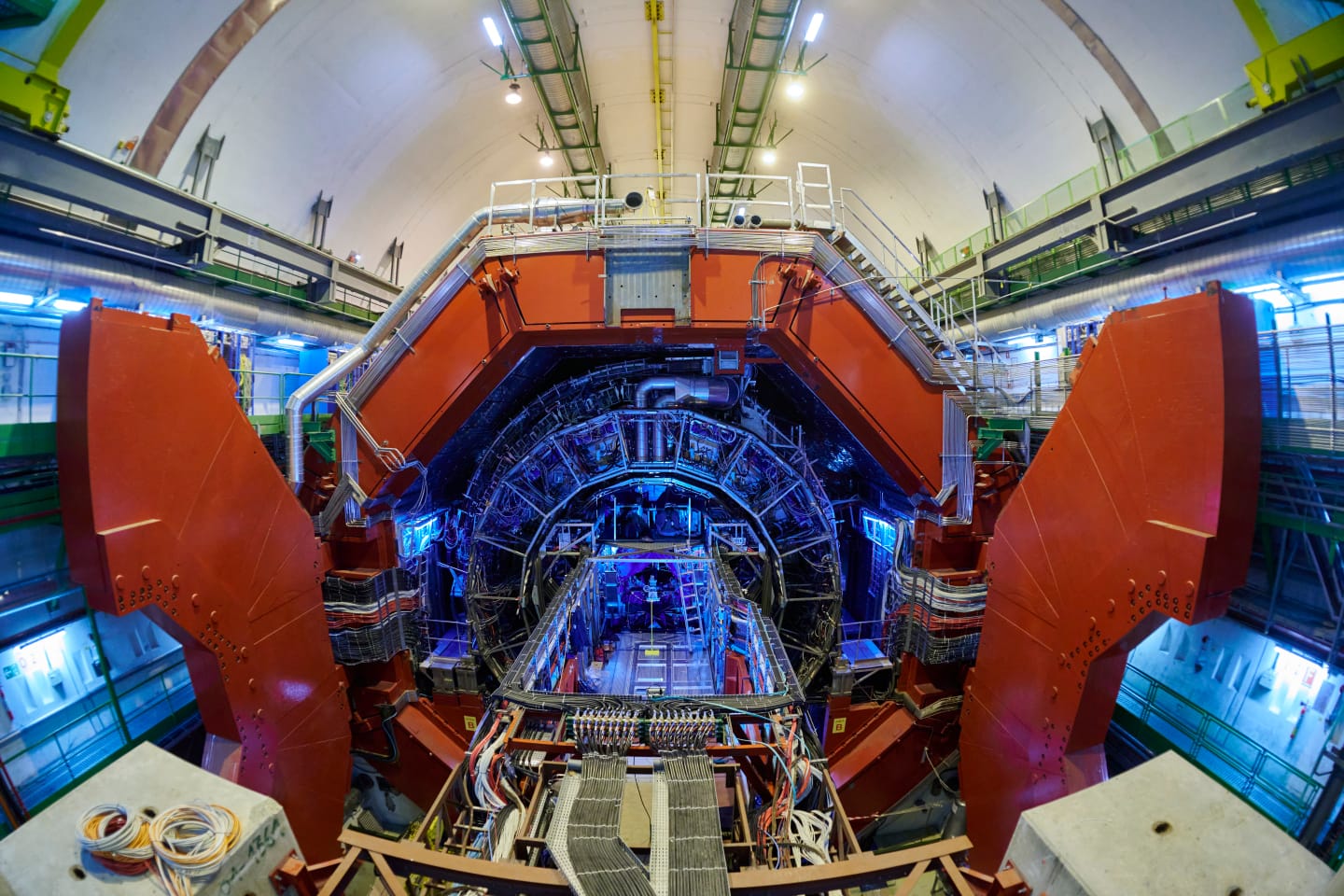ALICE detects the conversion of lead into gold at the LHC (CERN)

Near-miss collisions between high-energy lead nuclei at the LHC generate intense electromagnetic fields that can knock out protons and transform lead into fleeting quantities of gold nuclei. (…)
Extremely high-energy collisions between lead nuclei at the LHC can create quark–gluon plasma (…). However, in the far more frequent interactions where the nuclei just miss each other without “touching”, the intense electromagnetic fields surrounding them can induce photon–photon and photon–nucleus interactions that open further avenues of exploration.
The electromagnetic field emanating from a lead nucleus is particularly strong because the nucleus contains 82 protons, each carrying one elementary charge. Moreover, the very high speed at which lead nuclei travel in the LHC (corresponding to 99.999993% of the speed of light) causes the electromagnetic field lines to be squashed into a thin pancake, transverse to the direction of motion, producing a short-lived pulse of photons. Often, this triggers a process called electromagnetic dissociation, whereby a photon interacting with a nucleus can excite oscillations of its internal structure, resulting in the ejection of small numbers of neutrons and protons. To create gold (a nucleus containing 79 protons), three protons must be removed from a lead nucleus in the LHC beams. (…)
The ALICE team used the detector’s zero degree calorimeters (ZDC) to count the number of photon–nucleus interactions that resulted in the emission of zero, one, two and three protons accompanied by at least one neutron, which are associated with the production of lead, thallium, mercury and gold, respectively. While less frequent than the creation of thallium or mercury, the results show that the LHC currently produces gold at a maximum rate of about 89 000 nuclei per second from lead–lead collisions at the ALICE collision point. Gold nuclei emerge from the collision with very high energy and hit the LHC beam pipe or collimators at various points downstream, where they immediately fragment into single protons, neutrons and other particles. The gold exists for just a tiny fraction of a second.
The ALICE analysis shows that, during Run 2 of the LHC (2015–2018), about 86 billion gold nuclei were created at the four major experiments. In terms of mass, this corresponds to just 29 picograms (2.9 ×10-11 g). Since the luminosity in the LHC is continually increasing thanks to regular upgrades to the machines, Run 3 has produced almost double the amount of gold that Run 2 did, but the total still amounts to trillions of times less than would be required to make a piece of jewellery. While the dream of medieval alchemists has technically come true, their hopes of riches have once again been dashed.


